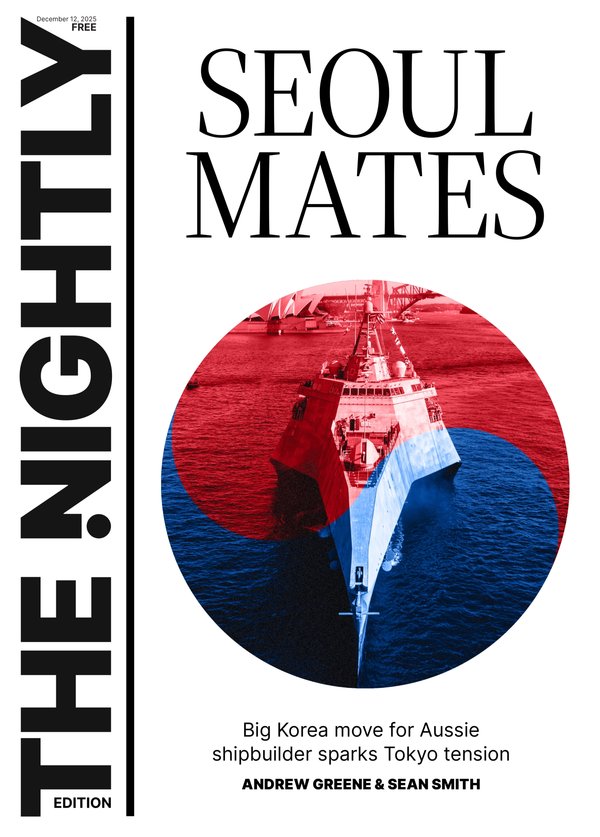Shipbuilder Austal keeps its eyes on the horizon amid a defence supercycle and return of suitor Hanwha
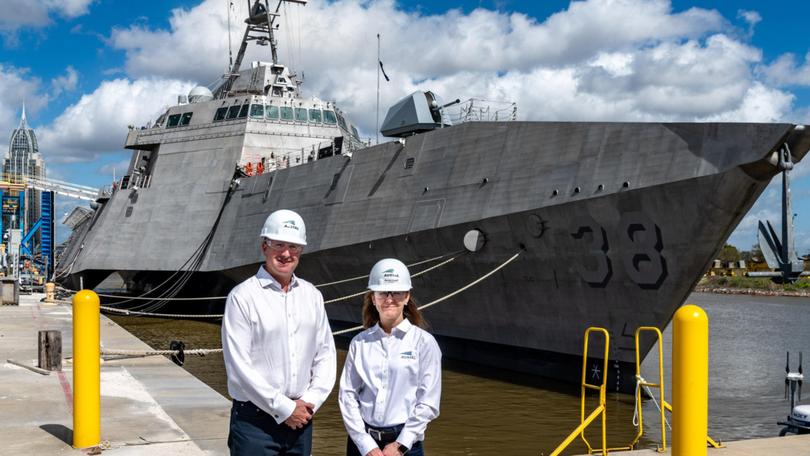
It may well be one of Australia’s least-known success stories, but Henderson-based naval shipbuilder Austal isn’t taking anything for granted as it ramps up a bustling US shipyard while grappling with renewed interest from a former suitor.
A likely big share of a potential $20 billion in Australian defence contracts is part of Austal’s attraction for South Korean group Hanwha, but the far bigger prize is the Australian group’s growing presence in the US defence sector.
Hanwha’s purchase last week of a 9.9 per cent stake in Austal coincides with a significant and strategically-important expansion of the company’s shipyard at Mobile in Alabama to support increased shipbuilding for the US Navy and US Coastguard, including reputationally-enhancing work on nuclear submarines.
Sign up to The Nightly's newsletters.
Get the first look at the digital newspaper, curated daily stories and breaking headlines delivered to your inbox.
By continuing you agree to our Terms and Privacy Policy.Austal USA, which is ring-fenced with its own management to abide with strict defence security protocols in the US, has turned out 32 ships since Austal founder John Rothwell revived shipbuilding in Mobile by setting up on the east bank of the Mobile River in 1999.
Another 50 vessels — from the final Littoral Combat Ships and Expeditionary Fast Transports that sustained Austal’s first US Navy contracts to hospital and ocean surveillance vessels, landing craft and patrol cutters — will be delivered over the next 10 years under an $US8 billion ($12.7b) order book.
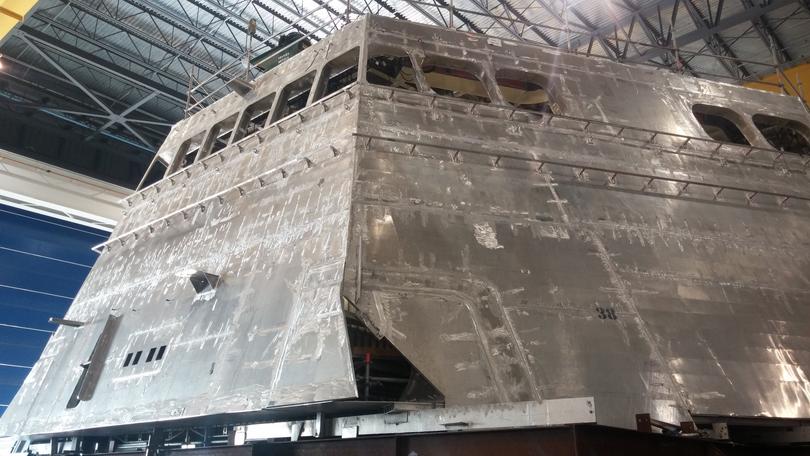
When The West Australian visited the shipyard, workers were poring over more than $1b of completed and near-finished vessels in Austal USA’s sheds and piers, including the group’s first-ever steel hull vessel — the towing, salvage and rescue ship the USNS Billy Frank Jr and the final EPF, USNS Lansing.
Nearby, construction work was commencing on a big additional assembly shed and an associated shiplift to handle bigger steel ships, as well as a production line to deliver command modules for the US Navy’s Virginia and Colombia-class submarines.
All up, the expansions represent another $US750m of investment at Mobile, including $US450m for the new submarine capacity that is being funded by US defence contractor General Dynamics Electric Boat.
The addition of the Alabama yard to the submarine manufacturing network will support the US Navy’s goal of turning out three submarines a year, taking pressure off strained schedules and aiding plans for the US to provide up to five Virginia-class subs to Australia from the early 2030s under the AUKUS alliance.
Once completed, the new facilities at Mobile will add 2000 jobs to Austal’s 3000-strong US workforce and increase the yard’s covered manufacturing space to 140,000 square metres.
It is an expansion that Austal believes has confirmed the shipyard as a valuable partner for the US Navy and underscores the company’s emergence as a lead player in both the US and Australian defence sectors with deep and sensitive ties to Washington.
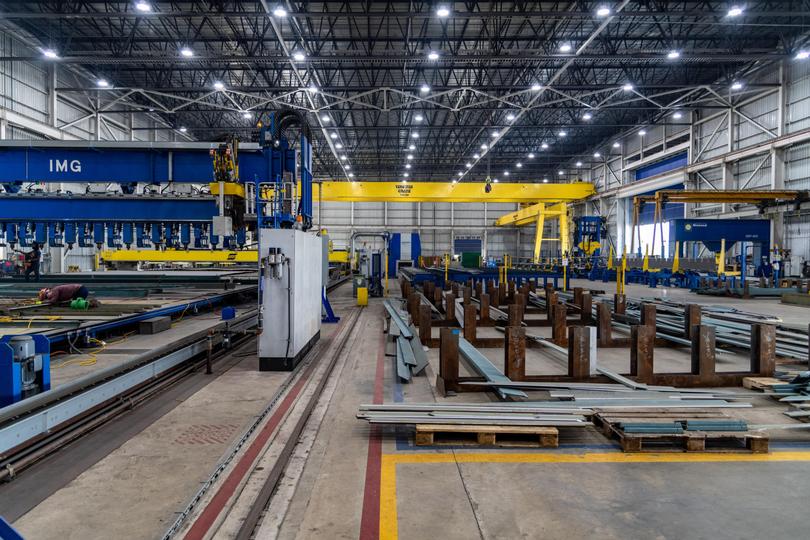
However, there is a sense that its position as a sovereign shipbuilder and strategically important defence contractor is sometimes not appreciated in Australia.
Hanwha, which last year bought a commercial shipyard in Philadelphia for $US100m, sees Austal as an entry into the US maritime defence sector as the Trump administration looks to “resurrect” the American shipbuilding industry.
Its keen interest in Austal is evidenced by its surprise return to the Australian company after quitting its takeover pursuit in September after accusing the target of making it impossible to carry out due diligence.
However, the Foreign Investment Review Board and the Federal Government will ultimately determine how far it can go with its ambitions at Austal, first by reviewing Hanwha’s bid to move to 19.9 per cent of the company.
The decision looms as a test of Australia’s desire for a sovereign shipbuilding industry as Austal waits on the Government to confirm the company as its shipbuilder of choice at Henderson ahead of future naval contracts for frigates, heavy landing craft and other ships.
Austal continues to argue that Hanwha is unlikely to get the necessary approvals in Australia and the US to take control of the group, though any outcome will also depend on the ongoing support of Andrew and Nicola Forrest, Austal’s biggest shareholders with a combined 19.6 per cent.
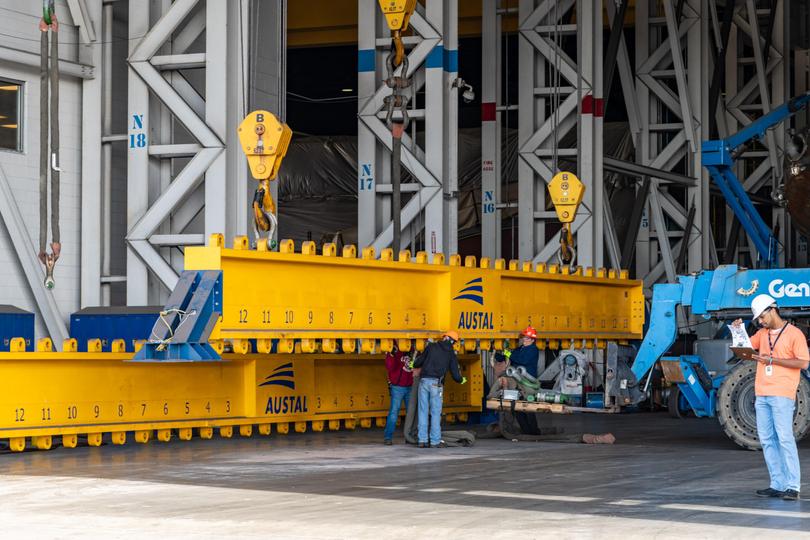
Outside the company, there is a view that while a bid could win FIRB backing, it would stumble on America’s Committee on Foreign Investment in the US given US sensitivities about providing access to classified defence technologies to foreign companies.
“Not only are we making ships for the US Navy, but we’re making a submarine modules for the navy, which is a highly-classified piece of gear,” Austal chair Richard Spencer, a former Secretary of the US Navy, said.
“I would also think it surprising if, in fact, the Commonwealth of Australia would have a national security asset being in somebody else’s hands.”
Austal chief executive Paddy Gregg said that even if regulators did give the go-ahead to a potential new Hanwha bid, Austal’s board would then have to agree on a price.
“If the regulators say it can be done, then it’s about what is the right thing for shareholders and what is the right number for a company that’s got billions of dollars in orders — the (US) yard is basically full for the next few years,” he said.
“We’re making massive investments because we see longevity, all under the umbrella of this defence supercycle, so we think there will be more opportunity in the next few years.
“The share price is going up as we start executing on the orders we’ve got, revenue increases, profit increases.”
Austal, which was speaking after hosting analysts, investors and media at Mobile in the wake of a board meeting in the city where the company is a major employer, reckons it is worth considerably more than Hanwha’s entry price last week of $4.45, which compared with the $2.86b it offered to buy Austal last year.
I would also think it surprising if, in fact, the Commonwealth of Australia would have a national security asset being in somebody else’s hands.
Mr Spencer said a lot of work was being done behind the scenes to increase productivity with the aid of automation and new technologies deployed to help overcome labour shortages and supply chain shortages that have weighed on production in the US shipbuilding sector.
“We’re undergoing a whole transformation process at Austal right now, specifically in North America, where we are increasing productivity in the neighbourhood of 20 per cent and streamlining the whole production capacity of the company for a long-range value plan,” he said.
Austal’s little-known advanced technologies subsidiary is playing a key role in the group’s technology ambitions by corralling industry opportunities in additive manufacturing for castings, forging fittings and 3D printing.
Austal USA Advanced Technologies is at the forefront of the push as the operator of the US Navy’s Additive Manufacturing Centre of Excellence out of a growing manufacturing technology hub in Danville in Virginia.
